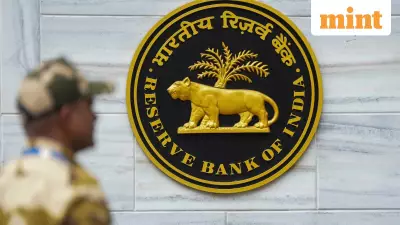
For countless investors in India, the most significant obstacle to wealth creation isn't market volatility or fund selection—it's their own psychological biases. Anthony Heredia, MD and CEO of Mahindra Manulife Mutual Fund, emphasizes that the real challenge lies in bridging the performance gap between a fund's returns and an investor's actual portfolio returns.
The fundamental issue isn't market outcomes, which tend to deliver over cycles, but how investors control their journey through these cycles. While the famous Warren Buffett advice to "be greedy when others are fearful" sounds simple, implementing it requires tremendous emotional discipline that most investors lack.
Three Fund Categories to Counter Emotional Investing
Fortunately, modern mutual fund categories are specifically designed to help investors overcome these behavioural pitfalls. These products blend the art of investing with scientific models to manage risk and volatility automatically.
Balanced Advantage Funds: Automated Market Navigation
Balanced Advantage Funds (BAFs) systematically eliminate investors' tendencies to overreact during market extremes. These funds automatically adjust equity allocation based on predetermined models that assess market valuations.
BAFs increase equity exposure when valuations appear reasonable and reduce it when markets become expensive. The debt component provides essential stability to the portfolio. Different BAFs employ varying methodologies—some use traditional metrics like price-to-earnings (P/E) or price-to-book (P/B) ratios of indices such as Nifty 50, while others incorporate more sophisticated models blending valuation indicators with sentiment and momentum data.
The primary advantage of BAFs is their ability to capture long-term upside while ensuring a less volatile journey and providing downside protection during market declines. Since different BAFs follow different rules, consulting a financial advisor is crucial for selecting the appropriate one.
Multi-Asset Funds: Ultimate Diversification Solution
Multi-asset funds represent a relatively new category that deserves greater attention from Indian investors. These funds invest in at least three asset classes—typically equities, debt, and gold, with some including silver, international equities, commodities, or real estate investment trusts for enhanced diversification.
If one time-tested principle exists in long-term portfolio success, it's that appropriate asset allocation held consistently is the most significant contributor to eventual returns. In today's environment where asset correlations constantly shift, multi-asset funds provide built-in allocation solutions.
The 2020 pandemic crash demonstrated their value when gold prices surged as equities declined, helping these funds limit losses. More recently, gold, silver, and debt have performed relatively well while equities continue delivering superior long-term returns. Like BAFs, most multi-asset funds use models to determine the relative attractiveness of various asset classes, bringing disciplined investing to the core of portfolio construction.
Anthony Heredia suggests that if there's one product an investor can hold almost indefinitely, it's a multi-asset fund. In fact, if limited to just one mutual fund choice, the multi-asset category would likely represent the optimal selection for most investors.
Traditional Hybrid Funds: Simplicity and Stability
For investors preferring straightforward approaches, aggressive hybrid funds (typically maintaining 65-80% equity exposure) and conservative hybrid funds (10-25% in equities) remain reliable options. These allow equity participation without full market risk.
Unlike dynamically managed BAFs, these hybrid funds maintain a defined mix of equity and debt. The equity portion drives growth while debt acts as ballast during market downturns. These funds suit investors who value predictability over tactical shifts and prefer maintaining control over their equity exposure levels.
Investing ultimately requires balance and discipline—qualities that may lack excitement but prove victorious over the long term. Rather than approaching investing as a series of sprints, hybrid funds offer marathon strategies designed for sustainable wealth creation.





